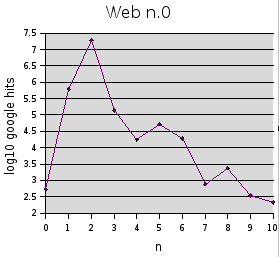I am going to the
2nd International Digital Curation Conference
Digital Data Curation in Practice
21-22 November 2006
Hilton Glasgow Hotel, Glasgow
which
will address different aspects of the curation lifecycle including managing repositories, educating data scientists and understanding the role of policy and strategy.
There is already an active forum/blog (2nd International Digital Curation Conference Blog) run by Chris Rusbridge (which actually alludes to this blog) . Chris ahas set out many issues and started to get some replies.
I’m on a panel – 3 panellists, 45 minutes.
Session 5: Panel Session – Open Science including Legal & Science Issues
Chair: Chris Rusbridge
Panel:
Andrés Guadamuz González – E-Commerce lecturer at the University of Edinburgh, and co-director of the AHRC Research Centre for Studies in Intellectual Property and Technology Law
Shuichi Iwata – Professor of data science and environmental engineering at the University of Tokyo, and CODATA president
Peter Murray-Rust – Department of Chemistry, Churchill College, University of Cambridge
I always think panels should give the delegates as much time as possible to bring up issues and offer their ideas – not just listen to semi-presentations from the panelists. So here are my issues for the panel sesssion:
- How do we change the culture of scientists to recognise the value of preservation, at the time of doing the work?
- How do we move away from hamburger PDF to semantic documents based on XML/RDF?
- Can we wrest “ownership” of scientific work from the publishers and move it to the community, using a Science Commons license or similar
- Can we create a self-sustaining business model
- What is the best way to make this happen? institutions (e.g. requiring reposition of digital theses), funders (e.g. requiring reposition of data), publishers (e.g. allowing Science Commons licenses – this is NOT the same as Open Access) and/or moving to a better business model or process
In some disciplines this has happened, or is starting to happen.
I will, of course, pick up more ideas on Tuesday. But that is roughly what I want to offer the audience.
P.


November 15th, 2006 at 12:02 am eI was hoping someone would pipe up with the answer, because now it’s kind of bugging me. It would seem the standard high school physics doesn’t apply to infinitely massive golf clubs wielded by superbeings. Or if it does, the golf ball flies off at infinite speed and/or blows up in a blinding flash of energy (amounting to it’s mass times the speed of light squared).Put a nerd out of his misery here – what’s the answer?